
Download Ansys 2022 R2 from the Ansys Customer Portal.
If you need assistance with downloading or installing Ansys 2022 R2, please contact us at (724) 544-0393 or technical.support@aopds.com.
Learn more about Ansys 2022 R2 by viewing the information below or by joining one or more of the upcoming webinars.
Gain Greater Engineering and Product Life Cycle Perspectives
Significant leaps in product design are driven by the ability to look at today’s challenges from different perspectives that bring together new ideas, experiences, and observed results. The latest products, technologies, and tools that makeup Ansys 2022 R2 enable experts to explore products and systems at a deep level under varying conditions to gain the insight needed to optimize their designs at every stage of the product development process. This insight is the catalyst for innovation and allows engineers to find answers where others cannot see past the challenges.
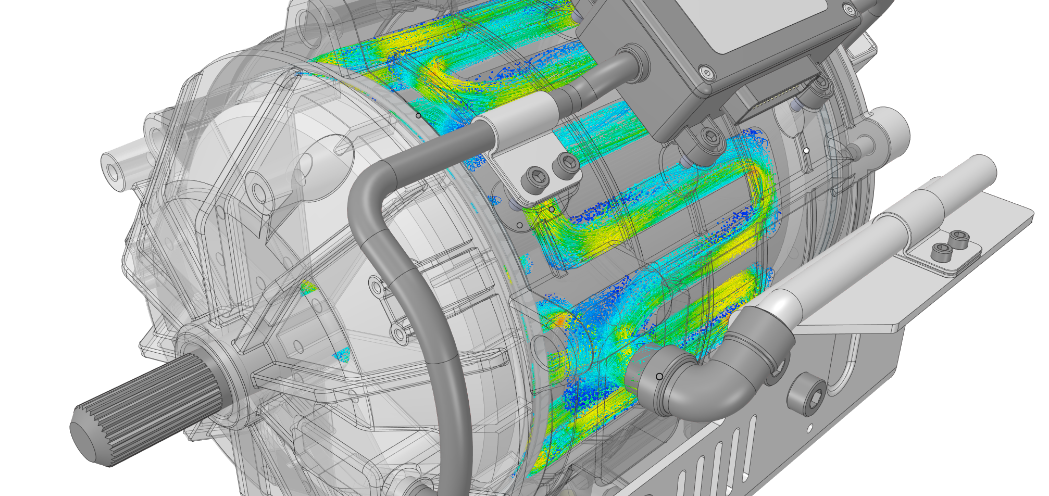
3D Design with Discovery
Ansys Discovery 2022 R2 continues to expand simulation capabilities and ease of use for every engineer to unlock innovation and increase productivity throughout the product development process. Specifically, customers in aerospace and defense, electronics, and the automotive industry will further their reach of simulation through accelerated associative workflows for bolted connections, the addition of porous media modeling in Live Physics and the availability of high-frequency electromagnetics within Discovery. In addition, more analysts can now benefit from Ansys Discovery’s geometry preprocessing workflows, award-winning Live physics, and interactive user experience.
RELEASE HIGHLIGHTS
- Bolted structures – Modeling bolted assemblies is now ridiculously easy. A new bolted connection tool detects mating bolt holes, matches sizing to industry standards, suppresses bolt geometry, and creates an associative physics connection that supports pre-tensioning between parts all in an automated single-click workflow. Additionally, Named Selections can now be used as physics references enabling a fully associative workflow from CAD to Discovery.
- Flow control devices & antenna ideation – Porous media modeling is now supported in Discovery’s Live Physics enabling fast, easy-to-use simulation of filters and other resistive flows. Additionally, high frequency electromagnetics modeling has been added for initial concept evaluation and placement of basic antennas before more detailed study in Ansys HFSS.
- Electronics cooling – Revamped tools for Icepak model simplification are now a part of Discovery offering an accelerated workflow for electronics cooling applications. Automated small feature and logo detection have also been added making it fast and easy to speed up your simulations and reduce issues through model simplification.

Acoustics Simulations
Ansys Sound has improved capabilities specifically for the automotive and aerospace industries.
A new update in the Ansys Sound ASD for EV module allows users to export an entire Sound project, improving communication and hand-offs between manufacturers and suppliers to facilitate in-vehicle infotainment integration. In addition, the Ansys Sound VRS module has enhanced sound quality for helicopter flight training simulators, enabling new sound sources to be achieved at known control points. Finally, updates to the Sound SAS module provide new representations and calculations for Power Spectral Density (PSD) and linear RMS values.
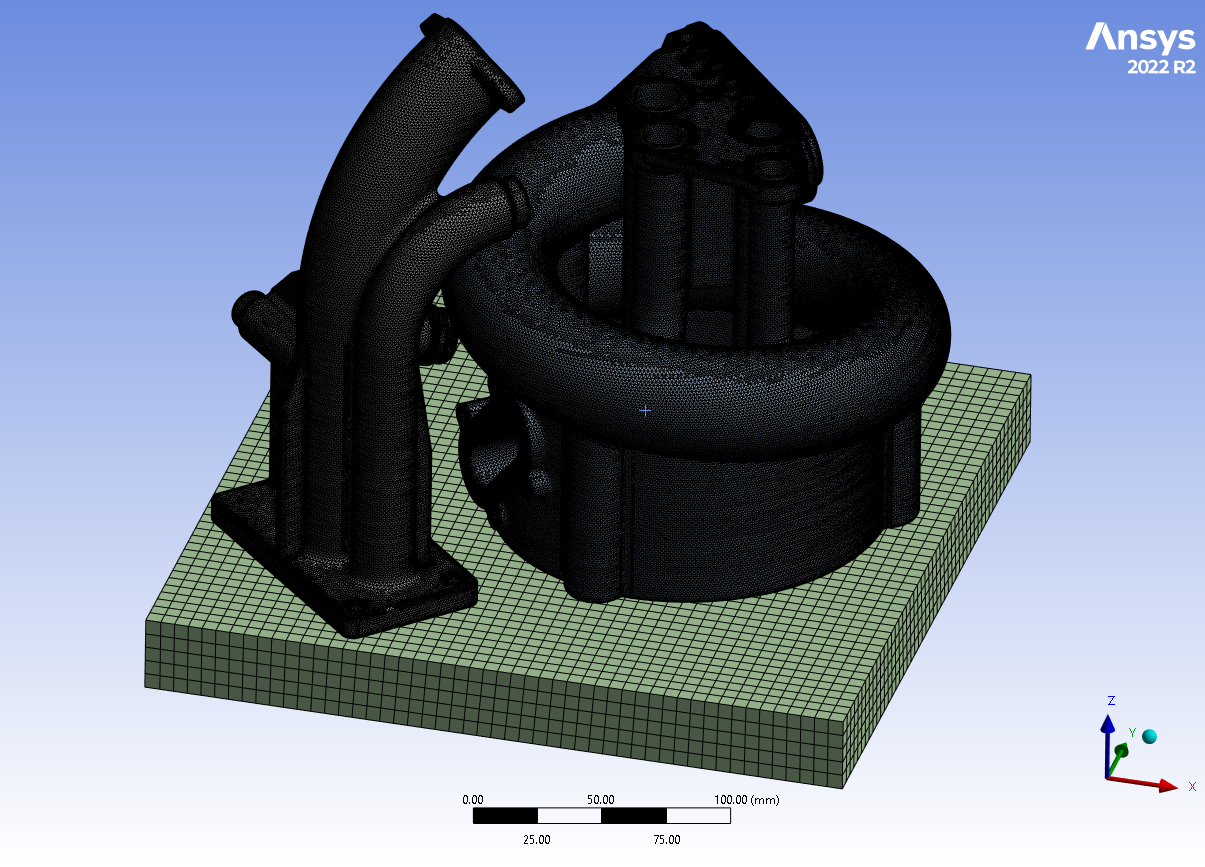
Additive Manufacturing
Ansys 2022 R2 continues to expand toolsets for Additive Manufacturing Users, streamlining your workflows between design, simulation, and manufacturing. In addition, every Ansys Mechanical User can now identify and minimize risk for build errors and ensure high-quality parts through process simulation for metal Laser Powder Bed Fusion (LPBF), Directed Energy Deposition (DED), and Metal Binder Jet (MBJ).
RELEASE HIGHLIGHTS
- Workflow improvements – Automatic Distortion Compensation, the ability to optimize a distortion compensated model within a simple automated workflow, which improves first time print success.
- Accuracy enhancements – Consolidating additive technologies to include Laser Power Bed Fusion (LPBF) scan pattern effects in Workbench Additive. With the consolidation of additive technologies, all users of the Ansys suite of additive tools now can rapidly increase the fidelity of simulation, capturing localized strain variations in each deposition layer. Scan pattern variations are particularly important in thin wall structures and rapidly repeating laser exposure strategies.
- Speed performance – Introducing a Machine Learning (ML) model for predicting thermal strain that can result in 10X time savings. Users can now easily explore the benefits of varying process setup parameters such as power, speed, and scan vector hatching by accessing the full fidelity of capturing process parameter and scan orientation effects without consuming compute resources for long periods of time.
- Expanded capabilities – More manufacturing possibilities through Metal Binder Jet, predicting large distortion and shrinkage during the furnace sintering process; as well as expanding the process simulation portfolio with the ability to identify, compensate and optimize the additive manufacturing process.
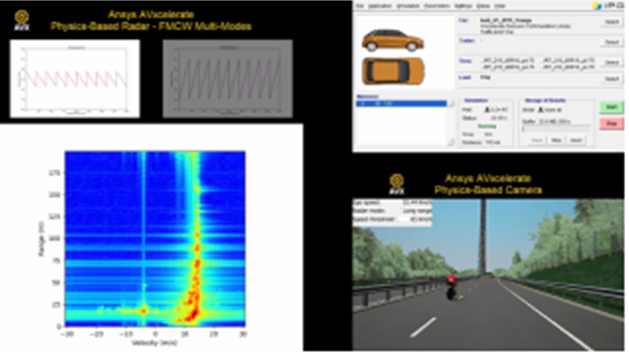
Autonomous Vehicle Simulation
The 2022 R2 release continues to drive an open architecture with the ability to connect Ansys physics-based sensors to third party driving simulators like IPG Automotive CarMaker or Carla, while bringing new innovations for sensor verification and validation. You can quickly and easily verify and validate your ADAS/AV features including sensor (radar, LiDAR and camera) perception with the driving simulation tool of your choice. And AVxcelerate can generate reliable, synthetic training data enriched with ground truth information for all sensor types; this type of data is essential for AI/ML-based perception algorithm training and validation.
RELEASE HIGHLIGHTS
With Ansys 2022 R2, Ansys AVxcelerate continues to enhance and accelerate the development of safe autonomous driving with industry-leading capabilities for simulation-based radar, camera and LiDAR sensor verification and validation, along with massive data creation utilizing AI capabilities. New NCAP functionality also enables OEMs to reduce physical testing so they can achieve 5-star NCAP ratings.
Co-simulation capabilities with IPG Automotive CarMaker enhances international traffic sign management to allow OEMs and automotive suppliers to ensure the safety of ADAS feature – like Traffic Sign recognition or Intelligent Speed Assist – by validating the perception algorithms using Ansys physics-based sensors simulation.
Ansys AVxcelerate Sensors
Camera
Create more accurate camera simulations that include third-party camera imagers models. Connecting supplier’s imager models to AVX resulting in life-like camera simulations, allowing users to validate comprehensive camera sensor simulations that mimic real world behavior.
Radar
Achieve better radar simulations with enhancements to the radar model. Radar simulation allow to define ascending and descending frequency swipe as well as switching mode during the scenario. Instantly switch from short-range to long-range directly in the simulations, ensuring that radars perform as expected in all modes using simulation.

Connect
In 2022 R2, Ansys Connect product collection continues to increase engineering productivity, foster better collaboration, and accelerate innovation by creating a connected digital thread across the entire product development lifecycle.
ModelCenter’s Behavior Execution Engine (BEE) integration ensues that system design meets behavioral requirements early in the development lifecycle. Minerva’s new ECAD viewer streamlines PCB design and analysis workflows providing designers and engineers a common interface to better collaborate in the design and analysis stages of the lifecycle. Ansys optiSLang Pro license option allows simulation analysts using Ansys Workbench and Ansys Electronics Desktop to run parametric design studies using state of the art AI/ML algorithms directly within their analysis.
RELEASE HIGHLIGHTS
Ansys ModelCenter
- Trade Study Warm Start – If something goes wrong (power failure, computer restart, or crash) half-way through your trade-study (parametric study, design of experiments, optimization, or Monte Carlo) restart it without losing any of your work.
- Enhanced ModelCenter and BEE Integration – Call any ModelCenter workflow from a Behavior Execution Engine (BEE) simulation. Connect any analysis into your behavioral simulation. Simulate your as designed system and assure that it meets behavioral requirements.
- New Plugins for FMUs and Ansys Fluent – Quickly integrate any Functional Mockup Unit (FMU) or Ansys Fluent simulation into your ModelCenter workflows. Utilize Ansys Fluent to verify that your system meets requirements.
Ansys optiSLang
- Ansys optiSLang Pro License option – optiSLang Pro reduces the barrier to get started with design studies for Ansys Workbench and Ansys Electronics Desktop users. Users can launch workflow automations and scale parametric design studies using state of the art AI/ML algorithms directly within the solvers.
- Ansys Granta Connector – Engineers can ensure consistent material usage when orchestrating and automating their simulation workflows with new connector between optiSLang and Granta.
- Monitor and debug the design of experiments (DoE) studies Visually monitor the workflow status of each of the experiments in a DoE study. DoE apps can also be monitored from Ansys Minerva
Ansys Minerva
- ECAD Viewer – With the new ECAD viewer, PCB designers and analysts can collaborate within the same interface. Simulation analysts get automatic notifications regarding design changes. Analysts and other team members can view the ECAD designs and leave comments on the designs using in-app communication capabilities
- Remote VDI Connection – Create Remote Virtual Desktop Infrastructure (VDI) sessions to run simulations from anywhere. Minerva manages the remote visualization sessions and controls the Data Flow in and out.
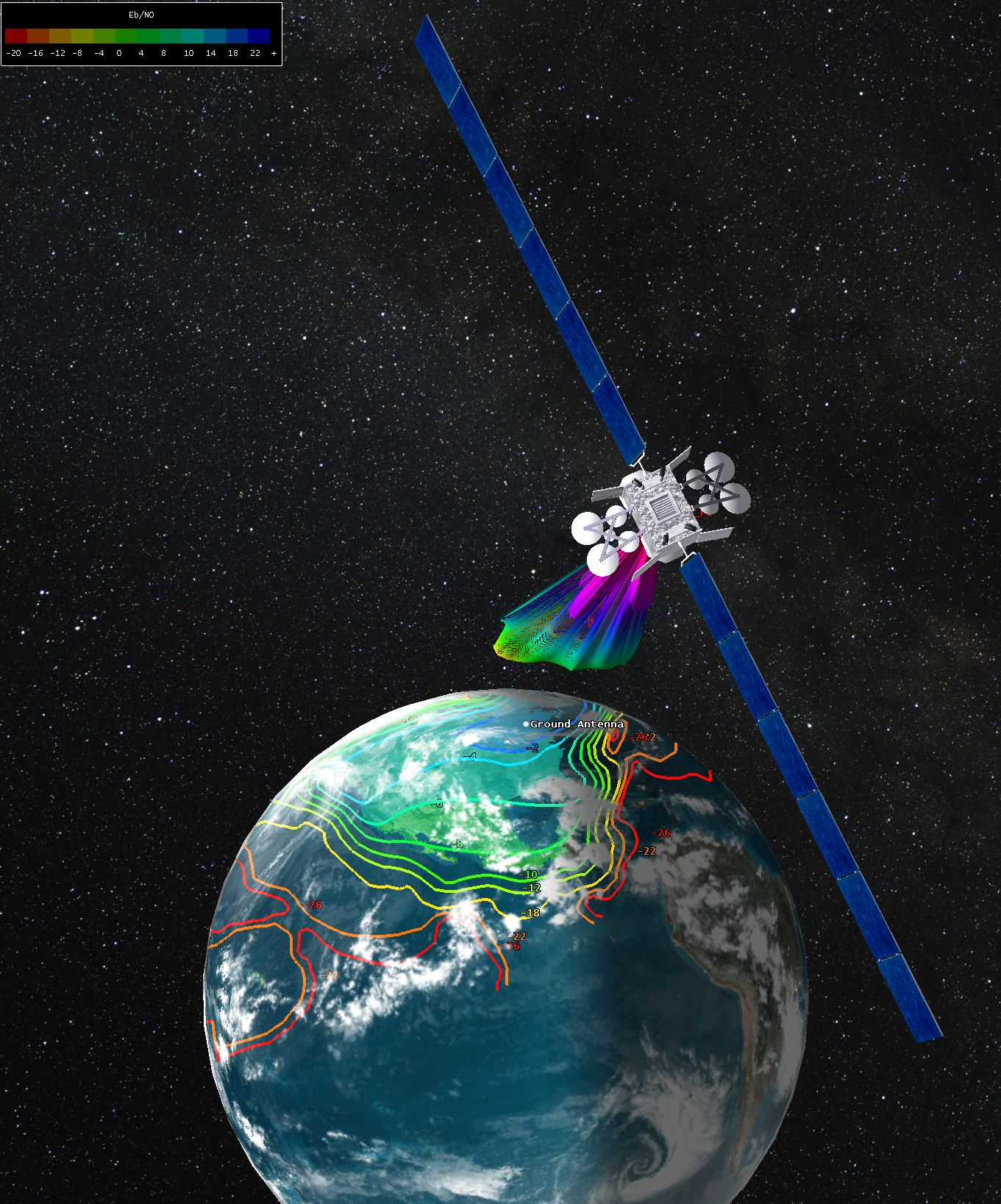
Digital Mission Engineering
The latest releases of STK and ODTK advance the extraordinary promise of digital mission engineering. The new features included in these releases are designed to enable aerospace and defense organizations to digitally transform the entire product life cycle: design, analysis, and operations. We’ve added new environmental models and improved sensor model fidelity, data ingestion, visualization, and much more. We have also enhanced STK’s applications for multidisciplinary collaboration with new integrations with Ansys solvers. Finally, improvements to the Behavior Execution Engine will extend the reach of behavior modeling to an even wider audience.
RELEASE HIGHLIGHTS
Large Constellation Improvement
As the commercial space segment continues to grow and the deployment of so-called “mega-constellations” looms, the need for modeling and simulation of space assets is more urgent than ever. STK’s large constellation modeling capabilities are growing to meet these needs. With STK 2022 R2, you can include the Satellite Collection object within chained calculations, to better analyze and understand complex routing options for connecting ground-based assets. STK’s Chain object defines an order-of-operations workflow across multiple assets so that you can analyze end-to-end links across collections of dynamic objects. Now that you can use the Satellite Collection object in a Chain object, these complex scenarios are much easier to configure. Since the Satellite Collection object handles the intra-constellation configuration automatically, you no longer need to configure multiple satellite constellation groups. Whether you need to understand the ability of a constellation to maintain imaging opportunities or estimate the anticipated performance and availability of the network from any point on Earth’s surface, using Satellite Collections inside Chains will provide better insight and flexibility.
RF Interference at Receiver Object
Designing and analyzing communications systems is complicated by the increasing congestion of the RF spectrum, making simulation of these systems and the RF environment essential. With STK 2022 R2, you can analyze the effects of a crowded RF environment on an individual receiver, making it quicker and easier to characterize interference and develop mitigation strategies. This new capability perfectly augments STK’s Comm System object, which is used to analyze groups of objects. With this pairing, you can now choose which workflow is best suited to your specific analysis task. In simple cases such as analyzing interference effects on an individual receiver, this new workflow is much simpler and more intuitive.
EOIR Improvements
STK 2022 R2 improves the modeling capability for EOIR sensor simulations by providing enhanced central body property maps. These property maps account for overlapping texture maps and enable you to model temperature, emissivity, and reflectance at higher fidelity. STK 2022 R2 also adds the ability to model ground vehicles and ships in EOIR and generate sensor-to-target metrics that incorporate these objects.

Digital Twin
With Ansys 2022 R2 release, we continue to provide our customers with the right technology for accurate & evolving Digital Twins, with Twin Builder Hybrid Analytics and its new Fusion Modeling capability. Hybrid Analytics combines ML-based analytics with the physics-based approach to create the best possible Digital Twins and to increase the digital twin accuracy up to 98% level and more!
As part of Hybrid Analytics, Fusion Modeling capability allows users to compensate for any unmodeled physics or other effects by modeling the difference between a physics model and data into the digital twin. The new release also includes powerful enhancements in ROM building process to predict the accuracy of the ROMs with absolute and relative error estimates during the build process of Dynamic ROMs.
The new library Toshiba ACCU-ROM Toolkit makes it easier to design Electric Power Steering (EPS) system.
Several enhancements to the Modelica UI are available in this new release, such as automatic connector sizing for array connections, support for Dialog and Final Annotation, and graphics improvements.
In addition to new features, Ansys Twin Builder is now available in PyAnsys ecosystem, letting you automate Twin Builder in Python.
RELEASE HIGHLIGHTS
Ansys Twin Builder
Easily Export and Deploy Digital Twin
- Fusion Modeling: Fusion Modeling, a new capability to Twin Builder Hybrid Analytics, accurately models the residual between model and prediction, allowing users to capture and include any remaining or missing physics into the digital twin
- Twin Deployer Workflow Enhancements: Several enhancements enable easier deployment workflow and improves the re-compilation workflow with Modelica libraries on Linux. Backend and frontend design changes improve user experience for twin deployment. With the help of new APIs for container deployment, user can set the customized initial parameters, and visualize ROM images in deployment. With this new release, Users are now able to run deployment on Ubuntu 20.04 OS.
Reduce Order Model Enhancements
- Error Prediction in Static ROM Builder: Predict the accuracy of the ROMs with absolute and relative error estimates during the build process
- Cut-plane Coordinate Specification on Normal Plane: Accurately define cut-planes with coordinates for better visualization
- Comparison of fields in Dynamic ROM Builder: Visualize & compare 3D-fields when building Dynamic ROMs
Modelica Enhancements
- Automatic Connector Sizing Support for Modelica Editor: Automatic connector sizing increases the connector size as more connections are made to a connector and re-adjusts as connections are removed.
- Tooltip Support for Connectors in Modelica Editor: Improved usability with new tooltip to identify size of mixed- size connectors, which is helpful for automatic connector sizing.
Solver & Model Library Enhancements
- Toshiba Accu-ROM: EPS Toolkit for System Simulation: New library for the simulation of the electric power steering system that enables fast simulation for both the electronic circuits and mechanical components.
General UI/UX Enhancements
- Twin Builder Automation with pyAnsys/PyAEDT: Automate Twin Builder workflows in Python with pyAnsys/pyAEDT
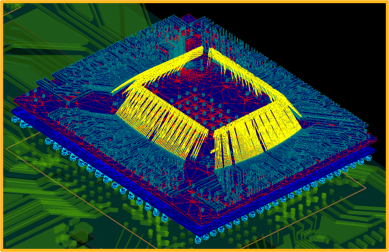
Electronics
With 2022 R2, Ansys Electronics solutions continue to bring best-in-class technologies to address PCB, 3D IC package, EMI/EMC, thermal, cabling, and electromechanical design challenges with significant advancements in 5G, autonomous and electrification simulation.
RELEASE HIGHLIGHTS
Ansys HFSS
- Complex Flex PCBs are everywhere from consumer electronics, aerospace/defense, 5G/6G, Autonomy.
The new HFSS 3D Layout Flex PCB workflow ensures resounding success of any product or system using flex PCBs connecting systems and components. It helps user’s setup flex PCB cable designs in HFSS Layout for rigorous 3D simulations including effects of bends and electromagnetic coupling - The capabilities of encrypted HFSS 3D layout components now extend to support IC design flows. Engineers working with foundry technology files for defining IC stackups will now be able to work seamlessly with these design inputs. This will greatly benefit 3D-IC and bespoke silicon design.
- HFSS performance is going up another notch by reducing design and simulation turn around time. This will benefit all users of HFSS and especially those engineers who solve designs at large scale in size and/or complexity. Who is ready to do more faster and powerful simulations with the accuracy of HFSS?
Ansys Maxwell
- High tech industry for portable devices will hugely benefit from the new best-in-class Multiphysics magnetic latching coupling workflow from Ansys Maxwell and Ansys Motion. This will benefit electrical and mechanical engineers designing magnetic latching devices and mechanisms. For e.g., detachable keyboards, pencil that attaches to tablets, wireless charging pads, latching wall-mount security camera, smart screen covers for phones, etc.
- Ansys Maxwell now provides the most accurate ROM model for induction machine to be leveraged into Twin Builder for larger drive system simulation. This will hugely benefit the electrical machine designers and system designers who are evaluating the impact of component design into the entire drive system.
- Skew modelling capability in Ansys Maxwell is touching a new paradigm benefiting both the system engineers and electric motor designers with two folder innovations. Firstly, the new ROM technique can be leveraged to extract an equivalent circuit of a 2D skew design benefiting the system engineer.
Secondly, the ability to parallelize the existing multi-slice technology via MPI will greatly increase the speed of entire 2D FEA simulation benefiting the electric motor designer.
Ansys SIwave
- SIwave now provides the most accurate way in the industry to compute results in the transition region between DC to AC. The new and unique AC/DC blending algorithm enables unbeatable accuracy. This will hugely benefit the SIwave SYZ calculations in HFSS 3D layout
- The powerful DDR Wizard in SIwave now comes with support for single IBIS AMI models. This will hugely benefit signal Integrity engineers designing package and PCB designs with DDR5 channels.
- Talk about automation at its best. Now, SIwave can automatically generate HFSS Regions when a user is leveraging SIwave solver in HFSS 3D Layout. The regions are automatically created in areas of 3D activities (such as port locations and vias) and can be modified by the user as desired. This automation speeds up the process of creating HFSS regions by orders of magnitude.
Ansys Icepak & Mechanical in AEDT
- Introducing a true Multiphysics workflow that allows users to take an Ansys HFSS/Maxwell/Q3D Extractor Design and automatically create either an Icepak design or a Mechanical Thermal design. This export incorporates all coupled excitations assigned, boundaries set, and a solution setup autogenerated to run too. All of this works with 3D Components in HFSS/Maxwell/Q3D Extractor in click of a button.
- The new slider bar meshing capability enables enhanced automated mesh generation and refinement for both Icepak and Mechanical Thermal. This will benefit thermal designers and analysts by reducing the pre-processing effort in creating accurate meshes for thermal simulations in AEDT.
- The availability of virtual mesh regions enables the ability to create mesh regions in Icepak in AEDT with offset from the objects of interest. It gives an ability to track the objects for parametric analysis. This enables enhanced abilities to run parametric and variation analysis in Icepak significantly improving the user experience.
Ansys Motor-CAD
- The resolution of the unique synchronous machine lab model available in Motor-CAD can now be customized and defined by the user enabling high fidelity efficiency map, torque/speed curve and drive cycle calculations. This will benefit the engineers working on synchronous wound field machines in the automotive and electrification industries.
- The new improvements in the NVH solution from Motor-CAD hugely benefits electric machine engineers who want to simulate the NVH behavior of electric machines concepts at the design stage.
- New advances include the infinite cylinder acoustic model, A weighting options and export to Ansys sound enabling improved accuracy and calibration capability to the NVH analysis.
- Enhancing the class leading automation capabilities of Motor-CAD is the introduction of RPC automation through Python which enables more control over automated Ansys Motor-CAD instances.
- This allows instances to be distributed and controlled on remote machines and provides improved error handling when scripting.
Ansys EMA3D Cable
- Announcing an integration between Ansys Discovery and EMA3D Cable. This integration benefits design engineers that are required to design for electromagnetic compatibility and allows them to use simulation early in product development.
- With the introduction of Nexxim Transient Circuit Component Model Import, Electronics design teams can import component models from common formats to include in the transient circuit co-simulation. This means that Ansys EMA3D Cable can now co-simulate with three solvers. These include a full wave solver, a multiconductor transmission line solver, and a transient circuit solver. Setting up a simulation with all three components takes significantly less time than any other product and is easier to learn.
- Electromagnetic Compatibility (EMC) engineers now have the ability to compare full device or full vehicle performance against standard EMC metrics with the new Full Vehicle EMC Limit Curve Comparison capability. This feature allows for the rapid specification of limit curves to quickly see how the simulation results compare to the requirements.
Ansys EMA3D Charge
- Announcing an integration between Ansys Discovery and EMA3D charge adding a critical product development workflow for EMC engineers across industries. Users will be able to leverage industry leading CAD interface of Ansys Discovery and will benefit in the preparation of full spacecraft platforms, full electronics boards, and components.
- EMA3D Charge now has specific animation probes to monitor Air Conductivity and Spatial Charge when non-linear backgrounds are used such as in plasma physics. These new probes will help EMC Engineers and PCB designers target where the air is conductive across their models.
- Space EMC Engineers can now simulate individual charged particle interactions with ambient timevarying electromagnetic fields, including the simulation of particle collisions with the new Particle-incell (PIC) simulations for space plasma environments in Ansys EMA3D Charge. This will benefit full platform spacecraft charging modeling in LEO and Polar orbits.
Ansys Nuhertz FilterSolutions
- The new enhanced discrete component optimization for RF filter design flow involving Ansys Nuhertz FilterSolutions, HFSS and Modelithics makes it possible to synthesize lumped RF filter designs and their layouts and optimize standard value surface mount components and their interconnects. This flow benefits RF designers who are tasked with creating RF filters using lumped surface mount components on circuit boards and substrates.
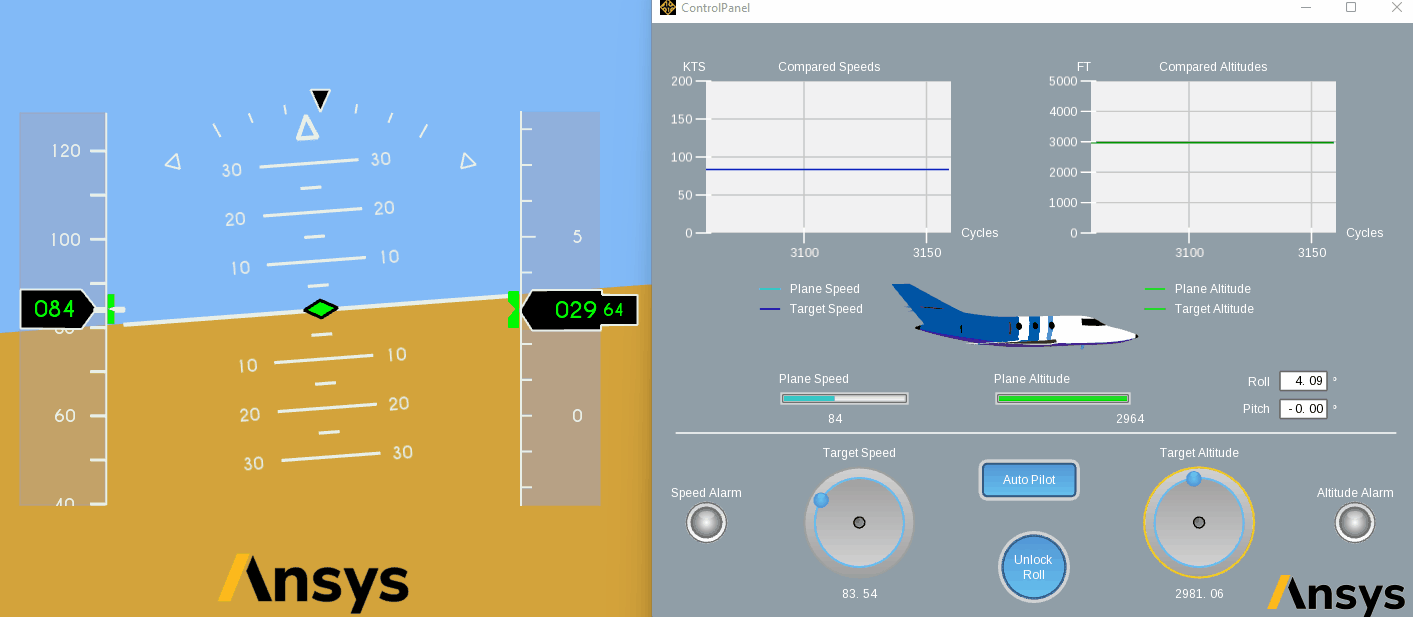
Embedded Software
Ansys 2022 R2 puts a particular focus on safe and secure code generation of embedded control and HMI software, facilitating compliance for international standards for security (SEI CERT C), safety and interoperability in A&D (DO-178C, ARINC 661, Khronos glTF™) and Automotive (AUTOSAR). Improvements brought to the Coverage Analysis Assistant further speed-up complex and time-consuming model and code coverage analysis activities.
RELEASE HIGHLIGHTS
Ansys SCADE Suite
- New CERT C compliance report: analysis of the SCADE Suite KCG high-quality generated code which ensures compliance with the SEI CERT C security coding standard and demonstrating that no security risks are associated to the SCADE generated code usage
- New SCADE Suite KCG 6.6.3 focusing on generated code stability with respect to local modifications in the models
- Enhanced SCADE Suite model refactoring capabilities, including on-the-fly visualization of inconsistencies, and quick fix commands to solve most frequent inconsistencies
- New capability to create, export and import archives (zip files) out of SCADE (Suite, Test, Architect) models, facilitating integration with ALM/PLM solutions such as Ansys Minerva
- Expanded AUTOSAR Classic support, focusing on software components (SWC), including support of Runnable Servers, Value implementation datatypes, Implicit data access as Explicit, and protection of RTE function calls
Ansys SCADE Display & ARINC 661
- New 3D Renderer for Embedded Displays: import and render Khronos standard glTF™ 3D assets, allowing embedded displays designers to include breakthrough rendering effects
- New ARINC 661 UA DF Generator with DO-178C Certification: qualified as DO-330 TQL1 tool, which is the highest safety level, and supports Definition Files with 90+ types of widgets including the Event Handler widget
Ansys SCADE Architect
- System Architecture Modeler UX enhancements supporting automated resizing of graphical objects representation with nested graphical elements and new table queries listing diagrams content
Ansys SCADE Test
- Coverage Analysis Assistant improvements to further speed-up complex and time-consuming model and code coverage analysis activities: improved reporting and reduced number of proposed test sequences
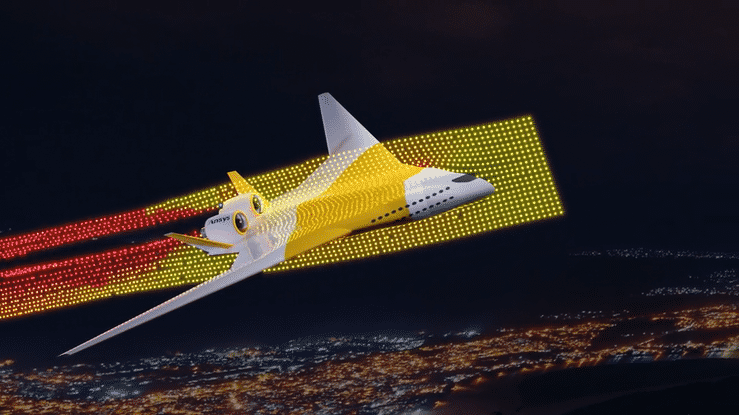
Fluids
The Fluids product line is continuing to make strides towards more efficient and sustainable CFD simulations in 2022 R2. This release includes major advancements in GPU technology, open source access and faster, more efficient workflows.
Some of these highlights include:
- Substantially reduce simulation solve time and total power consumption using the multi-GPU solver (beta) in Fluent.
- Automate processes, build custom workflows, craft customized solutions and more with PyFluent.
- Efficient and automated structured meshing in the Fluent watertight geometry workflow reduces mesh cell count and solution solve time.
- Simulate hydrogen generation and consumption with accurate and validated electrolysis and combustion models in Fluent
- Automated meshing of complex turbomachinery blade designs with TurboGrid hybrid meshing.
- Added support in Forte for cavitation, phase change and leakage modeling for liquid pump and valve simulations.

Materials with Granta
Make A Leap in Material-Led Eco-design
2022 R2 sees Ansys Granta’s products build on the data, tool and integration offering to help engineers factor in material sustainability earlier in the design process – helping reduce product development time and make more sustainable material choices.
Users of Ansys Mechanical can use the new Ansys Material Calibration app available in Granta MI™ to generate accurate material models from experimental data, to help drive simulation accuracy with materials across the simulation team.
With material now exportable from any Ansys Granta product to any Ansys flagship solver and a supercharged version of Granta MI Pro, we’re making it easier to take a first step to achieve Material Intelligence.
HIGHLIGHTS
- By combining the latest Eco Data, upgraded Eco Audit, and MI Gateway Icons that display sustainability data in simulation and CAD tools, engineers can take a material-led approach to eco-design.
- The new Ansys Material Calibration app is available in Granta MI Enterprise for Ansys Mechanical users to generate hyperelastic material models to enhance simulation accuracy.
- Granta MI Pro has been supercharged with 5X more material records, express installation, and scalability with Private Cloud for an easy first-step to achieve Material Intelligence.
Ansys Granta MI
Ranging from new applications and material indicators available in Granta MI Enterprise that help drive better simulation accuracy to an overhaul of MI Pro to offer a faster, scalable solution to Material Intelligence.
- Inform material choice with MI Gateway Icons – these are a set of material indicators that can be set-up in Granta MI’s Gateways with any integrated engineering tools such as: CAD or Simulation. Provide guidance for designers or simulation analysts on a material’s attributes e.g., recyclability.
- Build simulation-ready material models with Ansys Material Calibration app – Engineers using Ansys Mechanical can now access this easy-to-use application in Granta MI Enterprise to generate material models from experimental data. With hyperelastic material models users can then calibrate using Ansys’ AML curve fitting algorithm to excellent levels of mechanical simulation accuracy. The resultant values can then be shared via Granta MI Enterprise across the simulation team.
- Even easier first steps to achieve Material Intelligence – MI Pro has been supercharged with 5X more* available material data, including our unique Granta MaterialUniverse™ and Aero data bundles. Express installation for MI Pro now enables fast, easy deployment.
- Scale with Azure + AWS – Granta MI now supports AWS private cloud and is already certified for Azure.
- Deeper integration, now for Linux – a new Workbench MI Gateway is now available for Linux OS. New versions: Abaqus 2022, Hypermesh 2021, NX 2007, Ansys & AEDT 2022R2 are also supported. Datasheets for process and surface treatments can now also be quickly displayed in One MI.
- New way to manage substance-specification relationship – with new ‘roll-up’ functionality within Granta MI’s Restricted Substances module for customer’s in-house material databases. Reducing time and effort in creating the links between substances with material specifications.
- ‘Forever chemicals’ update for Restricted Substance Data – by adding ~3,500 per- and polyfluoroalkyl (PFAS) substances to the database. This will support users to assess the impact that proposed restrictions on PFAS may have on their materials, parts, and products before they come into force with REACH and other regulations.
Ansys Granta Selector
More powerful material selection tools. More of the latest material data. Exportable to more Ansys solvers.
- Perform streamlined LCA** with Eco Audit – Include user-defined data on material and process environmental impacts, both embodied energy and CO2 footprint, for a more accurate streamlined LCA.
- Powerful and intelligent material selection – enhanced decision-making with AND/OR logic and customizable material family envelopes for more informed material selection.
- Export key material properties for simulation – Granta Selector now exports material property data to Ansys Fluent and Ansys Sherlock. Improved integration with Engineering Data in Ansys Workbench makes material selection faster and more convenient for simulation users.
Ansys Granta Material Data (incl MDS)
Making the latest Eco Data available in relevant Ansys Granta tools.
- Latest Eco Data all in one place – enables the assessment of environmental impacts of 18,000+ records in a diverse range of sectors such as materials, chemicals, processes, and energy for different geographies – based on the ecoinvent v3.8 release.
- +30% temperature-dependent materials – 27,000+ records with new attributes like EM-frequency dependent properties, core loss vs flux density, creep modulus, now in Granta’s Core Data.
- Evolving Advanced Data – New producer grades and simulation-ready data from SABIC and Kuraray in Polymers, Sumitomo SMC and Toda Kogyo in Electromagnetics.
Ansys Granta EduPack
Improved versatility and customization to allow students to do more with EduPack
- Customize your Eco Audits – use your own material and process data to help students assess and compare the environmental impacts of products over its life cycle.
- Do more with selection and charting – create your own chart envelopes for reporting and use OR logic within Limit stages to enhance selection.
- Enhanced data and export capabilities – Updates to Level 3 databases and new exporters to Ansys simulation tools.
*Compared with MI Pro version 2022 R1
**LCA = Life Cycle Assessment
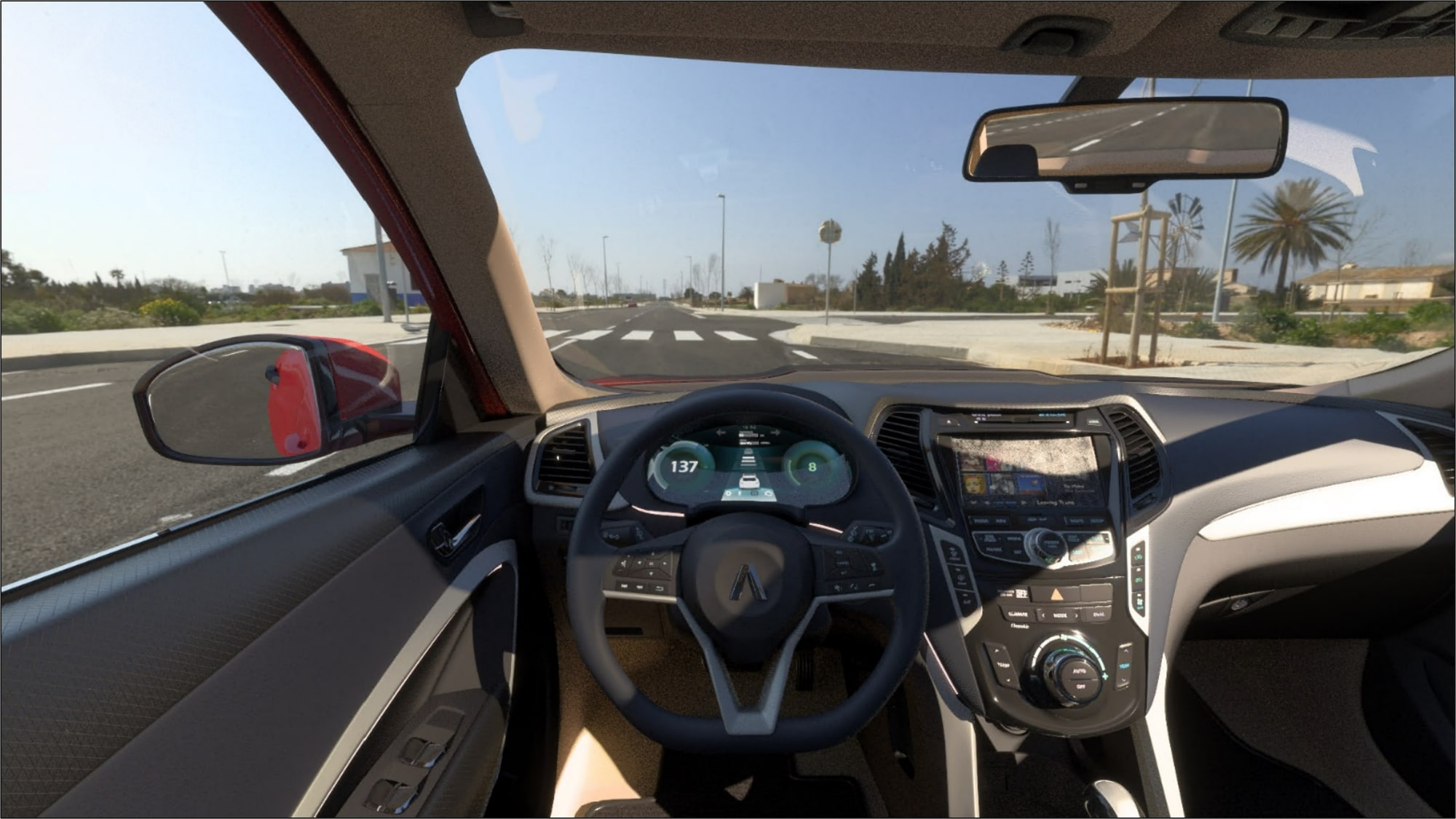
Optics with SPEOS
Ansys Speos continues to push the innovation envelope to deliver accurate, high performance simulation capabilities for optics designers. The 2022 R2 release delivers powerful capabilities that speed time to result, improve simulation accuracy, and expand interoperability with other Ansys products.
Productivity Enhancements
- Enhanced Productivity with Associative CAD Connection: Enables a stronger link with CAD data thanks to a bi-directional link easing the workflow for end user by shortening the design iteration cycle. Users can now modify parameters in the Speos UI, and the parameter updates will automatically occur in CAD and to the design in Speos keeping all links to Speos features.
- Save Engineering time with automatic optimization of your optical design: Speos 2022 R2 Freeform Lens enhancements add 2D illuminance target to freeform lens and automatically creates the back face of a lens to achieve the beam pattern. Allows users to automatically design a lens shape by using embedded optimization.
- Other productivity enhancements including Light Field simulation and compatibility, better meshing control with geometries meshed proportionally to each face’s size, easier Stray Light Analysis and hot spot detection and Labs enhancement allowing immediate access to key optical metrics.
Speos HPC/GPU Acceleration
- Speos 2022 R2 now supports multi-GPU, multi-nodes deployment with accurate simulation including now dynamic effect from camera.
- Multiple GPUs per node now possible boosting simulation time with high scalability. The more GPUs are used, the faster the simulation is.
- 1 GPU is 8x faster than a 32 cores CPU – 20 GPUs are as fast as 5000 CPU cores!!!
- User can increase number of rays to remove noise from simulation results, consider weather condition at night for sensor validation in open loop, simulate any straylight effect even coming from an exotic optical sequence.
- Dynamic effects in camera simulation now fully compatible with GPU Compute including v2.0 distortion files and Dynamic parameters (integration, lag time) support.
Ansys Integration
- Better Ansys Mechanical connection allowing users to analyze the mechanical deformation impact on optical performance: Eases Multiphysics workflow with faster and reliable connection through Workbench, enables multiple Speos instances to ease design optimization (1 for nominal design, 1 for deformed simulation and provides unique Ansys capability to automatically perform optical simulation from mechanical deformation.
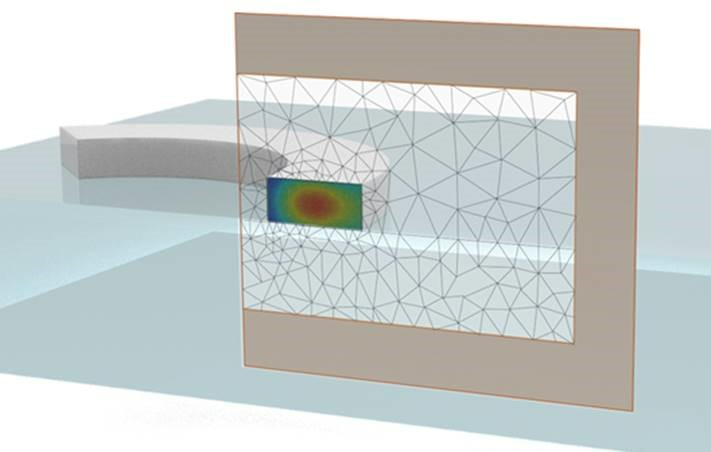
Photonics
Ansys Lumerical continues to push the innovation envelope to deliver accurate, high performance simulation capabilities for photonics designers. The 2022 R2 release delivers powerful capabilities that speed time to result, improve simulation accuracy, and expand interoperability with other Ansys products.
Nano to Macro-scale Optics for AR/VR, Metalens, Imaging, and Display Applications
- Full anisotropy in STACK solver for display design, optimization and integration with Speos
- New diffuse scattering workflow with Lumerical and Speos
- Improved metalens workflow with Zemax
- Improvements in Lumerical RCWA solver and integration in Zemax OpticStudio (BETA)
- Speos-Lumerical diffraction grating workflow for AR/VR and display applications (BETA)
Photonics Core Solver Improvements
- Multi-Quantum Well (MQW) solver integrated into 2D/3D CHARGE transport solver
- New workflow for single photon (Geiger mode) avalanche photodetectors (SPADs) for LiDAR, camera, quantum applications
- Rigorous Coupled Wave Analysis (RCWA) solver for AR/VR, metalens and display applications
- EME enhancements including improved performance on HPC workstations
Quantum Photonics
- Determine the fidelity of quantum gates with qINTERCONNECT solver, accounting for imperfections and losses
Electronic Photonic Design Automation (EPDA) Ecosystem
- New wizard for PCell import from Virtuoso Layout and support for statistical process variations in the Layer Builder to enable process-aware custom component design for photonic integrated circuits (PICs).
- Nonlinear Traveling Wave Optical Modulator model in INTERCONNECT for accurate simulation of high-speed photonic modulators (e.g., MZMs).
- Bundled KLayout integration for improved user experience with layout driven PIC design flow using KLayout and INTERCONNECT.
- Enhanced photonic model library in CML Compiler for the creation of Photonic Verilog-A models.

Safety Analysis
In Ansys 2022 R2, Ansys medini analyze provides new features that further extend and complete the efficient holistic application of safety, reliability, and cybersecurity analysis methods in a high-performance manner.
Our A&D customers benefit from improved quantitative fault tree analysis at the highest performance level. Furthermore, with Ansys 2022 R2 we offer componentized fault-tree logic embedded in design models with Component Fault Trees. This significantly reduces the effort of defining fault-trees for huge modular designs while at the same time increasing consistency and quality of such fault trees.
In the Automotive domain, we have extended the FMEA capabilities to support hybrid-failure nets as required by the VDA-AIAG FMEA standard. The integration with design models has also been extended to increase reusability in the design process.
RELEASE HIGHLIGHTS
Ansys medini analyze
- Fault Tree Analysis performance increase: Ansys medini analyze provides best-in-class performance and accuracy for quantitative and qualitative fault tree computations. This allows faster solving of huge fault-trees especially on system level or complete aircraft/vehicle. Customers can adjust truncation of cut-sets to a specific order as well as choose between exact and approximative calculation.
- Component Fault Trees: CFTs introduce the concept of componentization as an extension to classical fault trees to better deal with large complex designs. It allows to re-use or share fault logic by e.g. libraries. This new method is fully embedded into the SysML based system architecture and hence fulfills the needs of customers that want to extend model-based design (MBSE) to safety analysis. The evaluation of CFTs is re-using algorithms known from classical FTAs.
- FMEA hybrid-failure nets: The Monitoring and System Response (MSR) FMEA is completed by an extension of the failure net to model mitigated effects in case a diagnostic/safety mechanism is active. This is called hybrid failure net and with that capability full compliance to the VDA-AIAG FMEA standard is provided.
- Modeling extensions and failure mode inheritance: As our customers are building more and more complex designs that need to be analyzed for safety, we continuously extend our modeling and structuring capabilities to enable componentization, modularization, and libraries. In Ansys 2022 R2 customers benefit from failure mode and failure inheritance integrated into SysML parts and ports.
Ansys medini analyze for Cybersecurity
- UNECE R.155 catalog: Our customers need to give evidence that regulations of the UNECE in respect to cybersecurity are obeyed. To support this, Ansys medini analyze allows to relate identified threat scenarios to threats that are defined in the UNECE R.155 Annex 5. Thereby customers are enabled to validate their design whether all mitigations and security controls required for those threats are considered in the design accordingly.
- Automation in Risk Determination: Ansys medini analyze provides a fully automized way to determine the risk of a threat scenario. In Ansys 2022 R2 this includes the automatic feasibility level calculation for an attack path out of its separate steps plus the automatic calculation of a residual risk by considering the controls that are in place for risk mitigation.

Semiconductors
Top Highlights
- Power integrity leadership and innovation (highlight ROM, Sigma DVD + IR-ECO messaging for a more robust and efficient workflow)
- 3D IC Multiphysics, particularly thermal integrity (highlight hierarchical CTM)
- Performance and capacity enabled by distributed platform (TTSC/PFSC, on-chip emag – although not strictly Seascape)
- RedHawk-SC – Industry first hierarchical thermal analysis flow, for sub-5nm and 3DIC designs
- RaptorX – 2x speed up, and TSV support (Beta) – essential for increased problem sizes for on-die electromagnetics
- PathFinder-SC – 4x speed up, 3x memory reduction — essential for increased problem sizes for ESD analysis
RELEASE HIGHLIGHTS
Ansys RedHawk-SC
- 2022 R2 includes several significant enhancements to reduced-order modelling (ROM) capabilities that improve time-to-result and fidelity. These include a hierarchical chip-thermal-model (CTM) flow, generating nested models, and leaf-instance voltage back-annotation capabilities.
- 2022 R2 has enhanced the LibertyView for cell library information. The quality-of-results for importing Composite Current Source – Power (CCSP) models has improved, and the run-time performance of importing both CCSP and Ansys Power Model (APL) libraries has improved.
- 2022 R2 offers extensive performance enhancements to RedHawk-SC’s DesignView data processing, including improved run-time performance, better distributed worker scheduling, and significant reductions to peak-memory usage for Design Exchange Format (DEF) file processing.
Ansys RedHawk-SC Electrothermal
- 2022 R1 has 2x higher capacity and is 2x faster with the same accuracy as 2021 R2. These are important to address new analyses challenges caused by the extremely small form-factors of the latest 3D-IC semiconductor designs.
- RedHawk-SC Electrothermal can now simulate transient thermal behavior of designs that include performance throttling by thermal sensors. This is in response to remarkably high demand from customers who use this technique and who wish to optimize the locations, size, configuration of components along with the thermal sensors.
- Ansys’ Chip Thermal Model (CTM) now supports hierarchical CTMs which simplifies creating a full-chip CTM, allows mixed power model per block for increased accuracy, and matches the trend towards multi-core design in modern chips, like AI/ML and GPU-based designs.
- RedHawk-SC Electrothermal is now supported by Totem MMX.
- Thermal and stress distribution results can now also be displayed in cross-section.
Ansys – Synopsys Strategic Alliance
IR-STA: Voltage-Timing Flow (RedHawk-SC + Synopsys PrimeTime)
- Ansys has collaborated with our partner, Synopsys, to deliver a voltage-timing workflow that combines RedHawk-SC DVD analysis with PrimeTime timing analysis.
- RedHawk-SC’s Critical Path aware scenario generation has enhanced flexibility in user control over critical path activation
- Significant improvements in accuracy and reliability of timing results due to better handling of possible switching combinations for macros and aggressor cells.
IR-ECO: Engineering Change Order (ECO) Fixing Flow (RedHawk-SC + Synopsys Tweaker)
- Ansys has collaborated with our partner, Synopsys, to deliver IR-ECO – a new solution to joint customers that makes it very easy for RedHawk-SC to guide Synopsys and other implementation tools in the efficient resolution of dynamic voltage drop (DVD) issues without negatively impacting the power, performance, or area of the chip.
Ansys Totem
- Totem-SC provides a 20%-30% speed-up in simulating large analog/mixed-signal designs compared to 2021 R2.
- Totem-SC has added new features for advanced flows including self-heating and statistical electromigration, and support for the newest finFET and vertical-FET silicon processes.
- 2022 R1 delivers enhancements to signal IR checks for analog radio frequency (RF) and power management (PMIC) chips.
Ansys PowerArtist
- Make power-related design decisions reliably for advanced technologies 5nm and below with improved RTL Power predictability through enhanced event propagation, arithmetic macro modeling and timing-awareness
- Improve coverage for identifying power-related design issues early with enhanced time-based RTL power analysis of real application scenarios through distributed analysis of emulator-generated activity and a new power analysis engine that runs orders of magnitude faster on such long vectors
- The capabilities above are first non-production availability in 2022 R1 and are expected to mature in 2022 through initial customer engagements.
Ansys RaptorH & RaptorX
- Newly introduced support for distributed compute architecture massively reduces runtime and memory footprint for the RaptorX solver
- Improved meshing of package layers for the RaptorX solver results in significant performance benefits and paves the way for full die-package electromagnetic co-simulation
- Support for sub-7nm layout dependent effects (LDE) by the RaptorX solver supports more accurate modeling for designers using the newest silicon processes.
Ansys RaptorQ
- This new product is unique in the market for electromagnetic modeling of superconductive silicon designs for quantum computing applications
Ansys Exalto
- Several performance and usability improvements that significantly reduce runtime and simplify extraction setup in complex SoC designs
- Newly introduced support for distributed compute architecture massively reduces runtime and memory footprint
Ansys PathFinder-SC
- The 2022 R1 release is about 2X faster and reduces its memory footprint by 20-30% when performing resistance and critical dimension (CD) checks.
- 5X improvement in overall runtime from resolving flow bottlenecks in advanced driver-receiver checks
Ansys Clock FX
- Make design decisions related to voltage drop induced clock jitter for advanced technologies with transistor level FX modeling and distributed simulation.
- New graphic user interface (GUI) features to visualize clock jitter analysis results in a SeaScape environment.
- Significant improvements in usability and flow with makefile-based scripts and the integration of the FX engine into SeaScape.
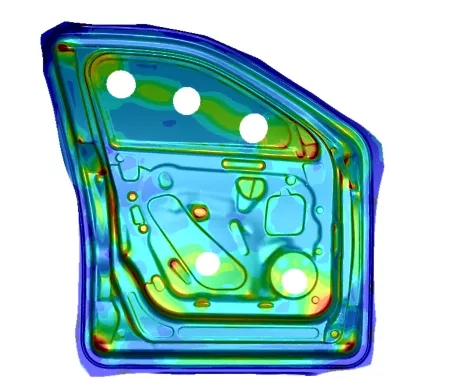
Structures
In 2022 R2, the Structures Business Unit products deliver new features that provide improved efficiency, innovation, and robustness. Product integration continues to be a driving force to enable users to expand and broaden their scope of simulations. Specifically, customers in the aerospace, high tech, and automotive industry will now be able to conduct more advanced closed-loop reliability workflows with the new functionality within Sherlock, Icepak and LS-DYNA for PCB component lifetime predictions. Other product integrations within optiSlang, Maxwell, and Motion are driving improved optimization studies for numerous applications. Detailed product updates are included below.
RELEASE HIGHLIGHTS
Ansys Mechanical
- New intuitively designed, and customizable toolbar for Mechanical Add-ons that empower users to access multipurpose workflows quickly and efficiently. The toolbar includes 14 Add-ons such as the NVH Toolkit, DesignLife Fatigue, and Bolt Tools.
- Robust workflow improvements with Mode Superposition (MSUP) Harmonic and MSUP Transient facilitate faster workflows and overall solver speed. Updates include cutting data mapping time by 50% and a 4X reduction in overall disk space requirement, helping users cut costs and maintain workspace flexibility.
- Increased exposure of Coupled Field Elements in Mechanical enables easier workflows for sensor design, MEMs devices and actuators. New capabilities include the ability to model piezoelectric and acoustic degrees of freedom and a library of commonly used piezoelectric materials used in sensor design.
Ansys Additive Solutions
- Workflow improvements include the ability to optimize a distortion compensated model within a simple automated workflow, which improves first time right success, along with the expansion of available process simulations through guided workflows and material models for Metal Binder Jet Sintering.
- Accuracy enhancements include the ability to include Laser Power Bed Fusion (LPBF) scan pattern effects in Workbench Additive. With the consolidation of additive technologies, users now can rapidly increase the fidelity of simulation, capturing localized strain variations in each deposition layer. Scan pattern variations are particularly important in thin wall structures and rapidly repeating laser exposure strategies.
- Introducing a Machine Learning (ML) model for predicting thermal strain that can result in 10X time savings. Users can now easily explore the benefits of varying process setup parameters such as power, speed, and scan vector hatching by accessing the full fidelity of capturing process parameter and scan orientation effects without consuming compute resources for long periods of time.
Ansys LS-DYNA
- Ansys Composite PrepPost (ACP) is now integrated with Workbench LS-DYNA to enable users to analyze composite structures for explicit analyses with layered structures. This workflow supports shell models and assemblies.
- New integrations between optiSLang Pro and LS-OPT Pro allows users to extend their design optimization analyses by leveraging technology from the two robust optimization tools. These integrations include additional capabilities such as MOP (metamodel of optimal prognosis) that allow users to automatically identify key parameters, saving valuable time and resources.
- Patent pending technology, multi-scale co-simulation, introduces a way for LS-DYNA users to include meso-scale effects from joints with macro-scale structures to analyze the global structural response and simultaneously capture failure responses at meso-scale without compromising accuracy.
Ansys Forming
- New functionality called, stoning, has been added to evaluate surface quality to replicate the testing process. This new feature enables users to easily find surface lows and smoothness in different orientations.
- Newly added CAD reader allows users to import native CAD files (UG, Catia v5. Solidworks, Solidedge, Inventor) without converting to IGES files to streamline the workflow between CAD and simulation.
- Improvements with mesh adaptivity functionality have been added to refine the mesh only in specific regions required for the given geometry. This improvement helps reduce the final number of elements resulting in reduced CPU time to save users simulation time without compromising accuracy.
Ansys Electronics Reliability
- New functionality within Sherlock enables users to export thermal results from Icepak and structural results from LS-DYNA into Sherlock for component lifetime predictions, enabling a more advanced closed-loop reliability workflow.
- Sherlock’s time to failure (TTF) predictions have been updated to minimize the impact of lead strain singularities on prediction algorithms for improved accuracy.
- The Sherlock parts database now includes advanced material modeling, including improved calculations of properties, new package types, and flexibility when defining electronic components.
Ansys Motion
- Automated co-simulation workflow with Motion and Maxwell to solve the details of the electromagnetic field and kinematics associated with moving magnets. This workflow enables Maxwell users to easily adopt co-simulation for advanced magnetic latching applications.
- Facilitate complex scenarios easier and faster with simulation scenario enhancements such as turning off/on model components and contacts over time within the Motion/Mechanical interface.
- Continued integration with Mechanical for pre and post processing that includes the release of contact post processing for Motion within Mechanical enabling users to bring complete workflows into a single interface.
Ansys Sound
- A brand-new capability available within the Sound SAS module allows users to calculate power spectral density (PSD) and easily compare frequency levels. In addition, linear Root Mean Square (RMS) level calculations make vibration signal analysis easier to perform.
- Users can now export comprehensive datasets from the Sound ASDforEV module at the end of the sound design phase and share it with the in-vehicle infotainment system supplier for inclusion in a vehicle series production line.
- Soundscape rendering within the Ansys Sound VRS module includes new types of sound sources for helicopter flight simulators (including noise sources such as rotor, gearbox, airstream noise, etc.) and other applications.

